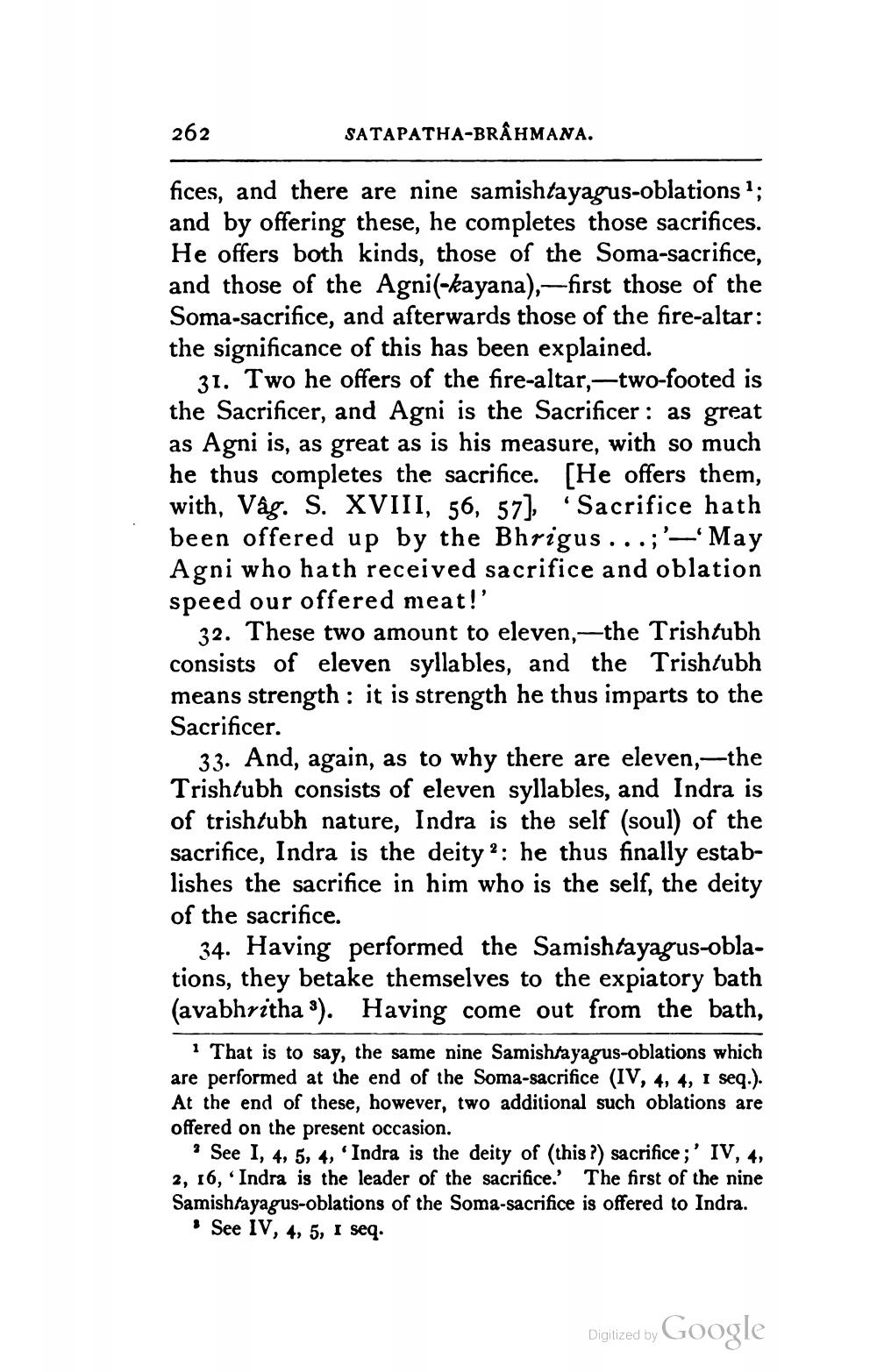________________
262
SATAPATHA-BRAHMANA.
fices, and there are nine samishtayagus-oblations1; and by offering these, he completes those sacrifices. He offers both kinds, those of the Soma-sacrifice, and those of the Agni(-kayana),—first those of the Soma-sacrifice, and afterwards those of the fire-altar: the significance of this has been explained.
31. Two he offers of the fire-altar,-two-footed is the Sacrificer, and Agni is the Sacrificer: as great as Agni is, as great as is his measure, with so much he thus completes the sacrifice. [He offers them, with, Vâg. S. XVIII, 56, 57], 'Sacrifice hath been offered up by the Bhrigus...;'-'May Agni who hath received sacrifice and oblation speed our offered meat!'
32. These two amount to eleven,-the Trishtubh consists of eleven syllables, and the Trishỉubh means strength: it is strength he thus imparts to the Sacrificer.
33. And, again, as to why there are eleven,-the Trish/ubh consists of eleven syllables, and Indra is of trishtubh nature, Indra is the self (soul) of the sacrifice, Indra is the deity 2: he thus finally establishes the sacrifice in him who is the self, the deity of the sacrifice.
34. Having performed the Samishtayagus-oblations, they betake themselves to the expiatory bath (avabhritha 3). Having come out from the bath,
1 That is to say, the same nine Samishrayagus-oblations which are performed at the end of the Soma-sacrifice (IV, 4, 4, I seq.). At the end of these, however, two additional such oblations are offered on the present occasion.
* See I, 4, 5, 4, 'Indra is the deity of (this?) sacrifice;' IV, 4, 2, 16, Indra is the leader of the sacrifice.' The first of the nine Samishrayagus-oblations of the Soma-sacrifice is offered to Indra.
See IV, 4, 5, I seq.
Digitized by
Google




